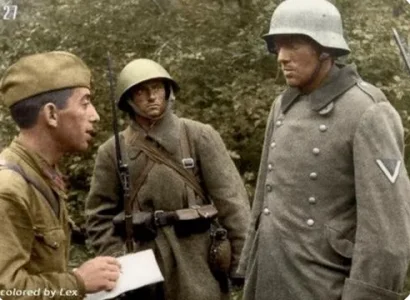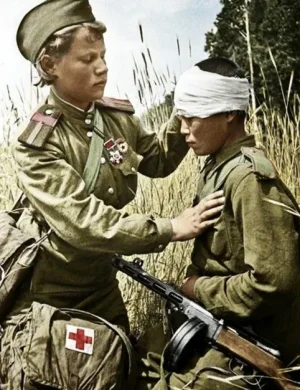Anna Leska, Polish RAF ATA pilot, 1942
First Officer Anna Leska was the first woman and one of three Polish women in Air Transport Auxiliary – British Auxiliary Air Transport Service. During the war she commanded a women’s squadron.
She was the sister of col. pilot Kazimierz Leski, also known as “Bradl”, the legendary intelligence officer of the Home Army and wife of Capt. pilot Mieczysław Daab.
At eighteen years old, Anna Leska-Daab qualified as a Category A and B glider pilot and as a balloon pilot at the Warsaw (Poland) Flying Club, which eventually granted her a sports pilot’s license. When the Warsaw Flying Club maintained that she had too few points to be admitted to flight training, she implied that the club discriminated against women. Early in 1939 she began to fly at Poland’s Pomeranian Flying Club. In June 1939 she qualified as a pilot of the RWD-8. Following Germany’s invasion of Poland in September 1939, she was assigned to the Polish Air Force headquarters squadron to fly liaison missions. She also delivered an RWD-13 to an indicated airfield, even though she then had only a few hours of solo flying to her credit. She subsequently flew sixteen wartime missions aboard this type of aircraft.
After her arrival in Great Britain via Romania and France, she initially worked at the headquarters of the RAF and subsequently at the British Air Ministry. Having passed a flying test intended for those with 250 hours of flying, she was immediately recruited by the ATA, even though she had but one-tenth of the flight-time requirement. Along with Jadwiga Pilsudska and Barbara Wojtulanis, Leska-Daab was one of three Polish women to fly with the ATA, which was subordinated to the Ministry of Aircraft Production. Leska-Daab started ferrying ATA aircraft on February 10, 1941, and served until October 31, 1945, longer than the other Poles, delivering the largest number of aircraft.
Stationed at Hatfield and Hamble, Leska-Daab ferried a total of 1,295 aircraft including 557 Supermarine Spitfires. She flew 93 types of aircraft, including flying boats, and was airborne 1,241 hours (Malinowski 1981, 12). When picking up an aircraft at a plant, she had to check its operation both on the ground and in the air and comment in writing on its performance during the flight for the benefit of the destination wing. After landing a multi-engine combat aircraft, such as the Wellington, it took some effort on her part to persuade the male pilots receiving the aircraft that she was, in fact, the pilot. Among her subordinates, whom she instructed and assisted, were five British women and one each from the United States, Chile, and Argentina.
“During the war in the ATA ranks there were 183 pilots. Most of them English – just 27 were Americans, as well as Canadians, from New Zealand, a South African pilot, a small number of Dutchmen and only three of us – Poles “- recalls Stefania Wojtulanis-Karpińska , one of the first foreigners in ATA (the third was Jadwiga Piłsudska , daughter of Jozef Pilsudski ).
Anna Leska-Daab was honoured with the Golden Wings badge awarded to senior officers, aviators with more than 6,000 hours in the air.
This photo was taken in 1942 by war photographer and reporter Lee Miller.
Anna Leska – Daab died on January 21st 1998.







